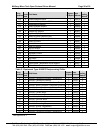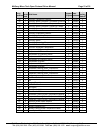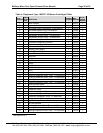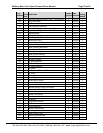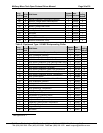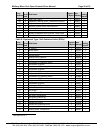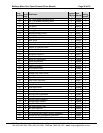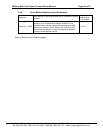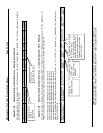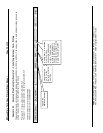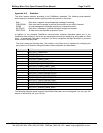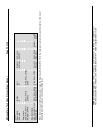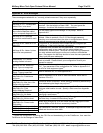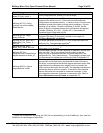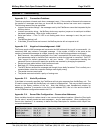
McQuay Micro Tech Open Protocol Driver Manual Page 35 of 35
FieldServer Technologies 1991 Tarob Court Milpitas, California 95035 USA Web: www.fieldServer.com
Tel: (408) 262 2299 Fax: (408) 262 2269 Toll Free: (888) 509 1970 email: support@fieldServer.com
Appendix C. Troubleshooting
Appendix C.1. Connection Problems
The driver produces a timeout each time a message is sent. If the number of timeouts is the same as
the number of messages sent then you know that the McQuay device has never sent a response.
The following reasons may be applicable:
• Incorrect connection settings - the messages sent by the FieldServer cannot be interpreted by the
McQuay device.
• Incorrect connection wiring – the McQuay device may require a jumper on its serial port to deflect
hardware handshaking. Refer to the vendor manual.
• Serial port failure – If the Tx LED is not flashing each time a message is sent, the port is not
working
• The McQuay device is off.
• If the Node_ID and Route are incorrect, the McQuay device will not respond at all.
Appendix C.2. Negative Acknowledgement - NAK
The Server sends a NAK message and increments the NAK stat each time a poll is unsuccessful. An
occasional NAK may indicate a corrupted message. If the number of NAK's is the same as the
number of transmitted messages to a Node, however, one of the following problems could apply:
• Bad Password - the password specified in the "read" command did not match any of the access
level passwords stored in the MicroTech controller to which the terminal is connected. Call FST
Tech support for default passwords or call your Vendor. FST recommends checking the
password first as in almost all reports the problem was resolved by changing the password.
• Device has been polled with an invalid command code.
• Bad Node_ID / Route parameters for the node.
• The MCQ device received the message and thought it was badly formatted. This is unlikely on a
repeated basis unless the connection settings were slightly wrong.
• The packet structure was invalid
• The packet was received with a parity or framing error
Appendix C.3. Node ID problems
If the Node is incorrectly specified, the FieldServer will not get a response from the McQuay unit. The
ID used to communicate with the McQuay unit needs to be determined. This may not be the same as
shown on the Rotary switches of the unit. Note that McQuay uses Hexadecimal notation for
addressing, therefore, if connection to the Unit is with address 0201, this is in Hex and the Node ID
for the FieldServer configuration needs to be 513.
Appendix C.4. Server Side Configuration – Consecutive Addresses
Some variables have their values stored in two consecutive address locations. When the Client polls
for the value it actually sends two read messages – one for each address. When configuring the
Server side, therefore, it is necessary to define two Map Descriptors for variables which require two
consecutive addresses.
Map_Descriptors
Map_Descriptor_Name ,Data_Array_Name ,Data_Array_Offset
,Function
,Node_Name
,Address
,
Length
Supply Fan Status ,DA_AI_01 ,01 ,Passive ,Node_A ,1118 ,1
Supply Temp ,DA_AI_01 ,02 ,Passive ,Node_A ,1063 ,1
Space Temp ,DA_AI_01 ,03 ,Passive ,Node_A ,1066 ,1
Control Temp Part 1 ,DA_AI_01 ,04 ,Passive ,Node_A ,1074 ,1



